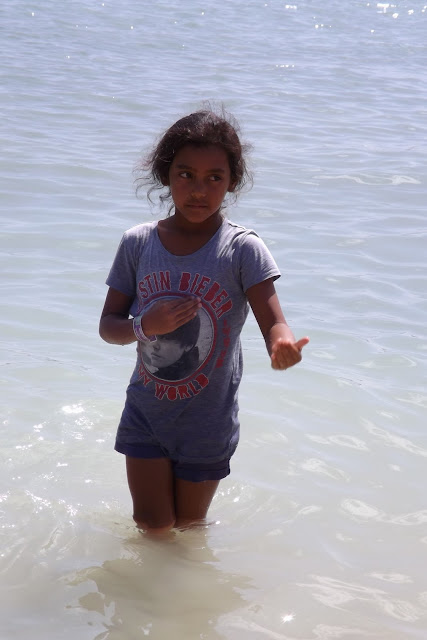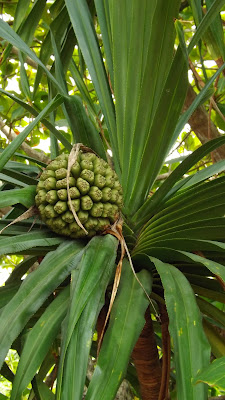Molokai Hoe started in 1952, a channel crossing in outrigger canoes – this one starts on Molokai and finishes on Oahu 41 miles later. Canoe racing is Hawaiian and this race is the race. To be in it is a hard won privilege, to complete it is a huge victory regardless of the finish time.
The plaques list the first place winners since 1952
The canoes have to get to Molokai , for instance, Namolokama’s boats had been barged to Kona for the queen Lilio race in September. Then they were shipped to Molokai for the women’s channel race two weeks earlier (Na Wahine o ke Kai). They paddle them to Oahu and then they are barged back to Hale O Lono harbor to await the Molokai Hoe. Paperwork must be turned in ahead of time and then verified on Molokai the day before the race.
The guys have to get themselves there as well. The day before the race, from Kauai we flew to Oahu on the earliest flight and the team went on to Molokai on a different airline. They carried their paddles and large bags of additional gear, and all of their personal secret sport fuels (quick proteins and spooky juice for hydration).
Team shirt, 60s guys
Every canoe is required to have an escort boat (usually a fishing boat) – there were 100 canoes, 100 motor boats. The 6-man outriggers have 9 man teams for change outs. The teams are open up to the age groups at 40 and over, 50 and over, 55 and over, and 60 and over. The teams in age groups 55 and 60 are required to have 12 paddlers each and there is no 70s division. Escort boats carry the captain, usually a coach, the alternating paddlers and sometimes other guests, easily over 1200 people. Additional boats are on the water as observers in addition to official boats and media.
These pick-up-sticks are 40 foot canoes before the 2010 race
at Hale O Lono on Molokai
Cover of Pacific Paddler magazine, Photo by Peter Caldwell
This year, Gil got a couple pics - he is usually so into the work at hand he doesn't grab a camera and this time we don't have any water shots.
Lots of work, part of paddling (Landis on left grinning)
This is Tom's personal strategy, letting the others do the work
The bay looks calm in the background
The race began at 8:00 am Sunday morning after traditional chanting and pule (prayer). There are official boats throughout the course and of course media in both boats and helicopters.
Oahu
OCHRA
The race is hosted by Oahu Hawaiian Canoe Racing Association (OHCRA).
While the guys have left Molokai, the preparation on Oahu is tremendous. The finish line is at the pier of the Waikiki Hilton Hawaiian Village Hotel with the classic rainbow tower overlooking both pier and awards tents. The Hilton kept water available as it was Honolulu
The pier and finish line with Diamond Head in the background
The webcast from a boat following the front runners
medals on table in front
blaring Honolulu sun outside of the tent
Rainbow tower of Hilton
lagoon to left and bay to right
Conditions in the Kaiwi Channel
Typical conditions should make this a downwind race. The Northeast trade winds (caused by the earth’s rotation) blow between 15-30 miles an hour at the surface. The deep ocean swell also created by this rotation has the whole Pacific to build on. Hawaii
When the women raced two weeks before, 10 of the canoes had trouble getting out to the start line due to a large incoming swell. Nine of them made it, one boat broken and a paddler hospitalized. Adjustments were made to cover more safety issues by the time the men went, but of course the conditions weren’t the same.
The two heads bottom right are in a canoe obstructed by the wave in front
in the foam at top is a severely crashing canoe
For a two minute video of this event go to: https://vimeo.com/50091662
Instead of a big swell for the guys two weeks later, the winds shifted and blew from the Southwest creating two separate factors for the seasoned paddlers. The winds brought VOG (volcanic fog) from the Big Island – sulphuric fumes that created such haze they could not even see Diamond Head, Oahu ’s landmark. The winds also created a cross-swell which defeated the ability for the canoes to surf. It is surfing the waves that makes the paddle go faster with less effort. This year, every inch was hard fought.
Without the surf factor, even Shell Va’a, the professional Tahitian team that has won for seven consecutive years, posted a time 45 minutes slower than last year.
Without the surf factor, even Shell Va’a, the professional Tahitian team that has won for seven consecutive years, posted a time 45 minutes slower than last year.
Hoe history - the six previous first place tags went to Shell Va'a
number seven will be added for 2012
Once the first canoe arrived and boats were visible on the horizon, the entertainment started: Tahitian drums then hula. Fun to watch but the downside was that the entertainment drowned out the webcast.
The professional team from Tahiti - Shell Va'a
Let the entertainment begin, first the sound of the conch then the drums
Edt second place, also from Tahiti
This was a nice gesture from nearly every team, clasping hands at the finish
Hula is a nice addition to this cultural event
Another Shell Va'a team took third place
A younger group of hula dancers, very nice
This little girl was playing with other kids until she saw the dancers and
joined in from where she was
Livestrong Hawaiian canoe team 4th place
Team Primo lining up for sprint to finish
Other boats on horizon waiting for the canoes to come through
Team Primo, another Hawaiian team takes 5th place
Within the first hour after the first canoe finished, only 30 of the 100 arrived. I watched a while and then went down to the pier to wait for other teams to come in. Unfortunately, one of the bars had a band start up and even next to the pier I could no longer hear what was broadcast. I didn’t even hear the phone in my pocket and afraid I missed them coming in, I went back to the tent to see the board. I checked my phone for messages and when I walked away, they arrived and I missed it!
The off-wind and choppy water made the going sluggish. The on-board teams and coaches altered strategy on the spot, however lots of the decisions had been made in the weeks prior to the race starting, during training. The Namolokama 60s team felt like they were in the best condition of their lives. Six of the men that made the team traveled the length of the island to train hard. They worked out the best position for each man and put in grueling hours on the water. They were coordinated and prepared and paddled their best race ever, coming in fourth. They were first in 2010 and third in 2011.
One of the strategies based on water conditions was whether to take a south or north course. Because of the south wind, they went the south course and in hindsight, the teams that went north won. The north route was calmer and the wind had not helped them going south. Proof of their own best race, they were only 38 minutes slower than last year despite the course. One further irony was that if they had entered as 55 year olds, they would have taken the bronze in that category. The 50s team also came in fourth on the same course.
Unofficial results were posted, Namo 60s guys finished at 6 hours 52 minutes, 4th
The 50s guys finished at 6 hours 47 minutes, 4th
The 55 Oahu team that took a bronze medal came in 6 hours 59 minutes
Hindsight !
THE DAY AFTER
While Gil and the team went to Molokai on Saturday, I went to Bishop Museum in Honolulu to do some research. The Library and Archives I had intended to visit were not open (even though I went during open hours according to the website). I spent many hours seeing the exhibits of the Hawaiian Hall.
Monday, the day following the race, Gil wanted to visit Bishop as well and we did but after a visit to the Honolulu Aquarium. I needed an underwater fix, it was close.
It is a spectacular aquarium, however I feel the loss at home due to private aquarium trade
Back to Bishop Museum, Ku dominates the floor
The pili grass "shack" behind him, was removed from Miloli'i on Kauai and reassembled here in the Hawaiian Hall


















































